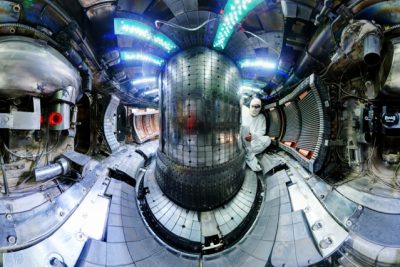
A new world record for plasma pressure has been achieved in the Alcator C-Mod tokamak nuclear fusion reactor located at MIT Plasma Science and Fusion Center (PSFC).
The new record raises the mark to 2.05 atmospheres, that is a 15 percent improvement over the previous record of 1.77 atmospheres, obtained in the same fusion reactor in 2005.
To exceed the 2 atmospheres of pressure, the plasma was heated with over 4 million watts of power up to over 35 million degrees Celsius inside the reactor for 2 seconds. During this time, 300 trillion fusion reactions per second occurred in a volume of approximately 1 cubic meter. The plasma had a central magnetic field strength of 5.7 tesla and it carried 1.4 million amps of electrical current.
Nuclear fusion has the potential to produce nearly unlimited, clean, safe and carbon-free energy. To achieve this end, a successful fusion requires the product of three ingredients: a plasma’s particle density, confinement time and temperature. When these ingredients reach a certain value, the so-called “triple product”, the energy released in a reactor exceeds the energy required to keep the reaction going.
The pressure, which is the product of density and temperature, is a key factor in this reaction since it affects two of these ingredients and the amount of power produced increases with the square of it. Therefore, doubling the pressure leads to a fourfold increase in energy production.
Nowadays, there is still a long way off to get nuclear fusion plants. These experiments and achievements give scientists more evidences about how move forward. For example, Riccardo Betti from University of Rochester says “This result confirms that the high pressures required for a burning plasma can be best achieved with high-magnetic-field tokamaks such as Alcator C-Mod”.
More information can be found here.
